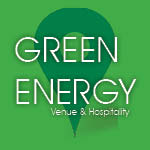
Giuliano Dall’O’
Politecnico di Milan, Italy
Title: Sustainable Architecture in Italy: An overview on green architecture according to LEED Protocols
Biography
Biography: Giuliano Dall’O’
Abstract
In recent years, green architecture is spreading around the world, reflecting a more conscious approach to sustainability by architects but also by the real estate market. Although the market growth of green buildings in many cases it is not fast, the feeling is that we have passed a point of no return and that green architecture is no longer considered experimental architecture, but a practice that is consolidating. The introduction and dissemination of international environmental certification protocols such as LEED has certainly helped to steer the market towards building recognizable models in which performance can be measured and/or evaluated on the basis of uniform criteria. The Protocols, however, necessarily introducing the elements of rigidity could modify the architectural choices, in other words, they may contaminate the Architecture of buildings. Contamination may be positive, if a certi cation protocol triggers a more environmentally-focused design, but it may also be negative, if said protocol becomes a constraint contributing to “globalizing” Architecture. The answer to the aforementioned dilemma, nurturing the cultural debate of the last decade, may only be found if one analyzes buildings through a study of the case studies of green buildings built in a certain period. The study presented in this paper is the result of a synthesis of research conducted on buildings LEED certified or undergoing certification in Italy. Of about 300 buildings that are found in this situation, 30 are analyzed in depth also from the technical point of view. The added value of this study has been the analysis of said buildings based on sustainability, allowing to look at architecture from what we consider to be a privileged point of observation.

